By using the DP-G series as the primary controller, the cascade constant abc can be used. By setting this, the temperature can be raised gradually, which has the effect of suppressing hunting.
Cascading constant make things even neater
By setting the cascade constant, you can raise the temperature gradually. This creates a clearer trajectory than simple cascade control.
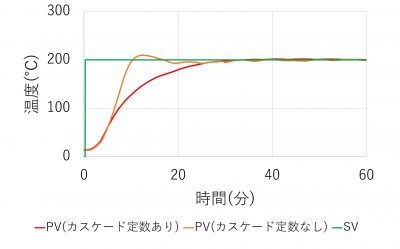
Comparison with cascade constant ON/OFF (primary side)
Limit the secondary temperature
What does it mean to set the cascade constant? If you look at the secondary temperature, the temperature is limited to a lower value when the cascade constant is ON. You can see that the temperature is increased while forcibly suppressing the output.

Comparison with cascade constant ON/OFF (secondary side)
Let's set the cascade constant on DP-G!
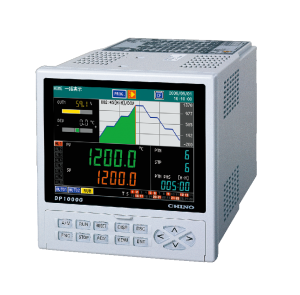
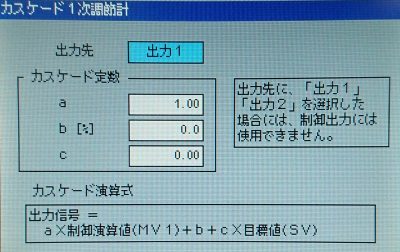
The cascade constant can be set only on DP-G. Select Mode 4 Cascade Primary Controller and enter the value of the cascade constant abc. This limits the secondary temperature.
Tips for deciding a, b, c: The right temperature + α
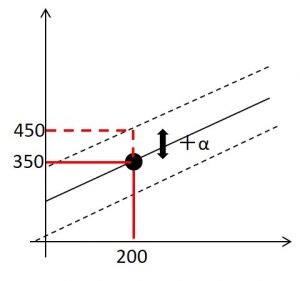
Determine the secondary temperature when the primary temperature is stable. In the example, when the primary temperature was 200°C, the secondary temperature was stable at about 350°C, so determine abc so that higher limit limit is 450°C, with a margin of 100°C.
Secondary side sv fluctuation range="" ~Calculation of a, b, c~
| parameter roles: a: Fluctuation range b: offset c: gradient |
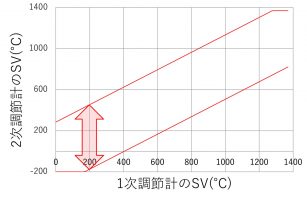 |
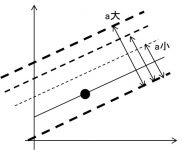  |
The arrows in the figure indicate the fluctuation range of the secondary SV at a primary temperature of 200°C. The method for calculating the upper lower limit limits is shown below.
If the sensor scale for both the primary and secondary is -200 to 1370°C for a K thermocouple, normalize to 200°C.
{200 - (-200)} ÷ 1570 × 100 = 25.4 (%). |
The higher limit limit (normalized value) of the secondary SV is
a × 100 + b + c × 25.4 (maximum value 100)
The lower limit limit of the secondary SV (normalized value) is
The result is a × 0 + b + c × 25.4 (minimum value 0).
The figure is an example where (a, b, c) = (0.4, -20, 0.85), so the upper and lower limit limits are from -175°C to 452°C.
(a,b,c) = (1,0,0), which is equivalent to no cascade constant computation. |
Setting cascade constant



